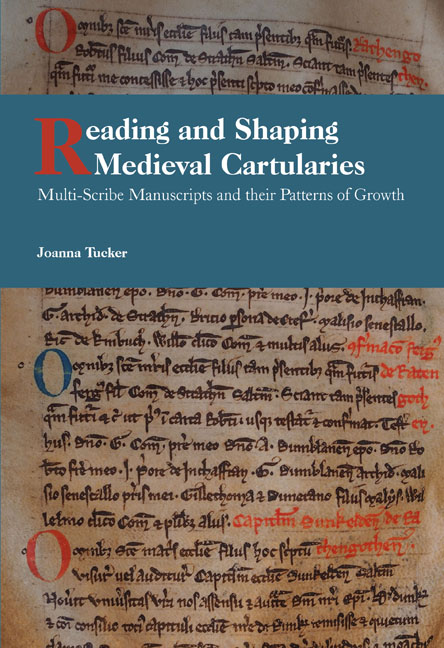Book contents
- Frontmatter
- Contents
- List of Plates
- List of Figures
- List of Tables
- Acknowledgements
- List of Abbreviations
- Conventions
- Introduction
- 1 Cartulary Studies
- 2 Analysing a Multi-Scribe Cartulary
- 3 The Creation and Growth of the Glasgow RV
- 4 The Creation and Growth of Lindores Caprington
- 5 Understanding the Patterns of Growth in Multi-Scribe Cartularies
- 6 Conclusion
- Appendix: Contents of the two Cartularies by ‘Series’
- Bibliography
- Index
- Studies in Celtic History
- Frontmatter
- Contents
- List of Plates
- List of Figures
- List of Tables
- Acknowledgements
- List of Abbreviations
- Conventions
- Introduction
- 1 Cartulary Studies
- 2 Analysing a Multi-Scribe Cartulary
- 3 The Creation and Growth of the Glasgow RV
- 4 The Creation and Growth of Lindores Caprington
- 5 Understanding the Patterns of Growth in Multi-Scribe Cartularies
- 6 Conclusion
- Appendix: Contents of the two Cartularies by ‘Series’
- Bibliography
- Index
- Studies in Celtic History
Summary
In order to understand the patterns of growth in the two medieval cartularies in this study, a fresh approach to their form and contents has been required. The approach is about following the path of the material itself, wherever it leads, and resisting the gravitational pull of any established or preconceived ideas about cartularies or their creators. In other words, it is about working as far as possible ‘with the grain’ of the manuscripts. In the context of this particular study, working with the grain of the two cartularies has meant confronting their multi-scribe, haphazard additions and piecemeal growth. Since the two case studies here – the cartularies of Glasgow Cathedral and Lindores Abbey – are not unique in having additions of this nature, a number of the insights from this study will be applicable more widely to other cartularies and to other manuscripts as well.
The new methodology for multi-scribe cartulary manuscripts
A key outcome of this study has been the development of a new methodology that attempts to engage with the cartularies in a way that allows their initial creation and later growth to be analysed and understood. The method has seven main steps, dealing first with the manuscript's physical structure (its binding, collation, and series), then its scribal activity, then its contents and their dating, and finally arriving at a framework for the analysis of each ‘series’ within the manuscript. Following these steps has allowed each manuscript's development to be analysed systematically as a whole, rather than focusing simply on its earliest parts.
One significant outcome of the methodology is that it offers a new way of thinking about the dating of cartularies. The conventional method for this – which is mainly based on establishing the main scribe's latest included document – is fundamentally problematic, since it is built on the basic notion that cartularies were essentially registers of all the institution's documents. It also embeds the idea that the earliest portion of the manuscript is the most significant part. The analysis here, on the other hand, has demonstrated how deep it is possible to go into the manuscript's history when both relative dating and palaeographical analysis are applied to its multi-scribe portions.
- Type
- Chapter
- Information
- Reading and Shaping Medieval CartulariesMultiple Scribes and Patterns of Growth, pp. 223 - 228Publisher: Boydell & BrewerPrint publication year: 2021



